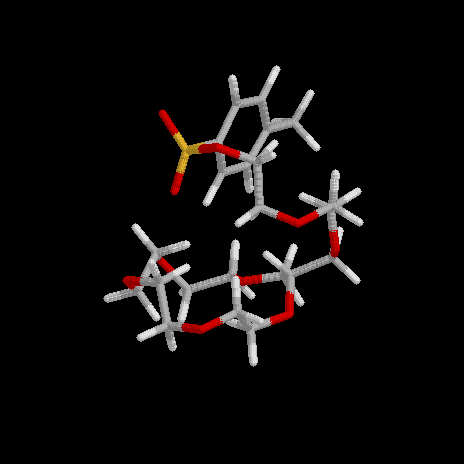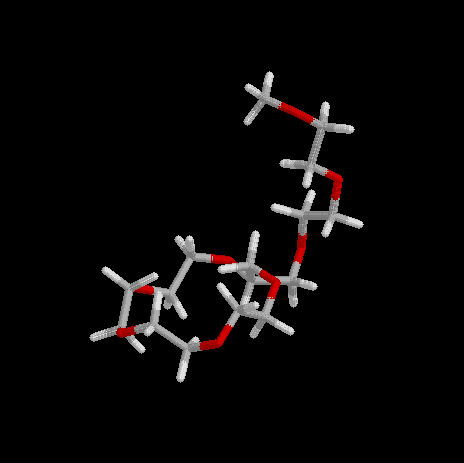

| Cation | KSub 1, dm3 mol-1 | KSub 3, dm3 mol-1 |
|---|---|---|
| Sr2+ | 8 x 102 | 12 |
| Ba2+ | 3 x 103 | - |
| Substrate | k0, s- 1 |
|---|---|
| 1 | 1.76 x 10- 5 |
| 3 | 2.60 x 10- 6 |
The values reported in Table 1 for Sr2+ clearly indicate that the polyoxyethylene side arm participates in the binding of alkaline earth cations.
The increase in reactivity observed for compound 1 with respect to 3 (Table 2) can be rationalized by the effect of the different branching of the carbon atom adjacent to the reaction centre. 5
In
Fig. 2 and
Fig. 3
are plotted the dependence of krel = kobs/ k0 on the analytical Sr2+ and Ba2+ concentration, respectively, where kobs are the pseudo-first-order rate constants measured in the presence of the alkaline earth cations.

The comparison with the reaction of compound 3 in the presence of Sr2+ (see Previous results) shows a slight reduction of the catalytic effect, krel (1) ca 15 at [SrBr2] = 4 x 10-2 M and krel (3) ca. 32 at [SrBr2] = 4 x 10-2 M. Since KMeO is identical for both reactions, it derives that KTS / KSub (1) < KTS / KSub (3), i.e. the polyoxyethylene side arm stabilizes the transition state to a lower extent than ground state.
Barium cation is more effective than strontium cation in catalysing the substitution process. This result depends on the relative importance of KMeO , KSub and KTS . Nevertheless, since KMeO (Ba2+) ca KMeO (Sr2+), 1a , 3 , 4 it derives that (KTS / KSub) (Ba2+) > (KTS / KSub) (Sr2+). Taking into account the data of Table 1, it emerges that the larger and less solvated cation (Ba2+ 1.35 Å , Sr2+ 1.18 Å) 6 is better accommodated by both the substrate and the transition state.
 1
1
 2
2 Introduction
Introduction